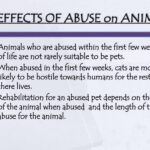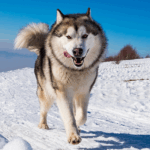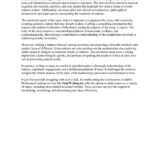Rodeos are traditionally revered as thrilling spectacles of human ingenuity and prowess in handling animal performance. This longstanding practice is often met with enthusiastic cheers and applause from the crowd. Yet, one cannot help but pose this intriguing question: Is the rodeo merely a performance art, or does it masquerade as entertainment while inflicting pain on sentient beings? The dialogue surrounding this topic is contentious, leading to fervent debates among animal rights advocates, enthusiasts of equestrian sports, and the general public.
At its core, a rodeo is an event where participants showcase their skills through various competitions involving animals, such as bull riding, steer wrestling, and calf roping. The participants’ athleticism is indisputable, and the events are steeped in a rich heritage that traces back to ranching traditions. Yet, a disconcerting reality persists—the treatment of the animals involved. What happens in the name of sport rarely aligns with modern ethical standards regarding animal welfare.
Proponents of rodeos argue that these events are a celebration of cowboy culture and ranching heritage, combining skill, tradition, and community spirit. Many claim that the animals are well-cared for and trained, suggesting that they enjoy participating in such events. They argue that rodeo animals undergo significantly less stress than those in industries focused on meat production. Furthermore, the rodeo community often emphasizes that animal welfare is paramount, leading to the implementation of veterinary protocols and humane treatment policies during events.
However, many critics contend that these claims are insufficient to absolve rodeos from scrutiny. While individuals in the rodeo industry may advocate for the welfare of the animals, the inherent nature of these events raises ethical concerns. The use of equipment such as spurs, flank straps, and bull ropes can inflict pain and distress upon the animals. These tools, designed to provoke an adverse response, can lead to serious injuries, both physical and psychological. The underlying questions of consent and enjoyment arise—not just for the animals, but also for the spectators.
Additionally, the confusion delineating competition from cruelty becomes particularly pronounced given the unpredictable nature of both animal and human behavior. In events such as bull riding, the bull’s instinctual reaction is to buck and escape to liberate itself from perceived danger. This natural reaction, albeit thrilling to onlookers, raises poignant ethical queries. Are these animals being put into a situation where their well-being is secondary to the spectacle? What does it say about our societal values when we derive pleasure from the discomfort of living beings?
Furthermore, scientific studies highlight the psychological effects of repeated exposure to stressful situations on animals. Stress and anxiety in animals can lead to long-term psychological damage, undermining the argument that rodeos are harmless. Animals subjected to routine competition conditions may experience fear, limiting their ability to participate naturally in their environments. This poses a vital consideration when examining the broader implications of such events on animal welfare.
The rodeo industry posits safeguards intended to protect animals, yet these practices often come under fire for being superficial or inadequately enforced. While certain regulations exist, discrepancies between written policy and on-the-ground practices can result in prolonged suffering. Instances of injury, both serious and trivial, rarely receive the attention required to effect meaningful change. Consequently, one must question whether the existing framework is comprehensive enough to advocate for the humane treatment of animals while still allowing for rodeo spectacles to unfold.
This leads to a crucial inquiry: how do we reconcile the seemingly ingrained culture of rodeos with a contemporary understanding of animal rights? Should a historical connection justify the persistence of practices that may contravene the welfare of sentient beings? Some proponents suggest reimagining rodeos to focus on non-competitive displays of animal talent that preserve traditional values without compromising welfare standards.
What might an evolution of the rodeo landscape look like? We frequently see equestrian events that celebrate the bond between humans and animals without resorting to competitive pressures. Institutions dedicated to animal sanctuaries and adoption could coalesce with rodeo principles to create vibrant exhibitions, prioritizing the welfare of animals while still evoking community and heritage. Through collaboration, rodeos can pivot towards a new paradigm where story, respect, and companionship triumph over competition and potential cruelty.
Moreover, increased public awareness and advocacy regarding animal rights create a climate ripe for change. Sensitivity toward animal welfare has made strides in recent years, prompting many individuals to reassess their views on traditional practices, including rodeos. The emergence of alternative forms of entertainment that prioritize animals’ emotional and physical well-being—such as exhibitions, training showcases, and educational programs—can offer a more fulfilling and ethically sound avenue for community gathering.
In conclusion, while the rodeo may evince sentiments of pride and tradition, it demands rigorous introspection as to the ethical implications surrounding its practices. The unyielding question of animal cruelty must remain at the forefront of the discussion. Should we hold onto the vestiges of cultural heritage if they come at the cost of an animal’s welfare, or is it time to embrace new forms of celebration that prioritize compassion and care? The answer may very well dictate the future of this age-old institution, ultimately determining whether the rodeo will adapt in concordance with evolving societal values or remain mired in its contentious past.







